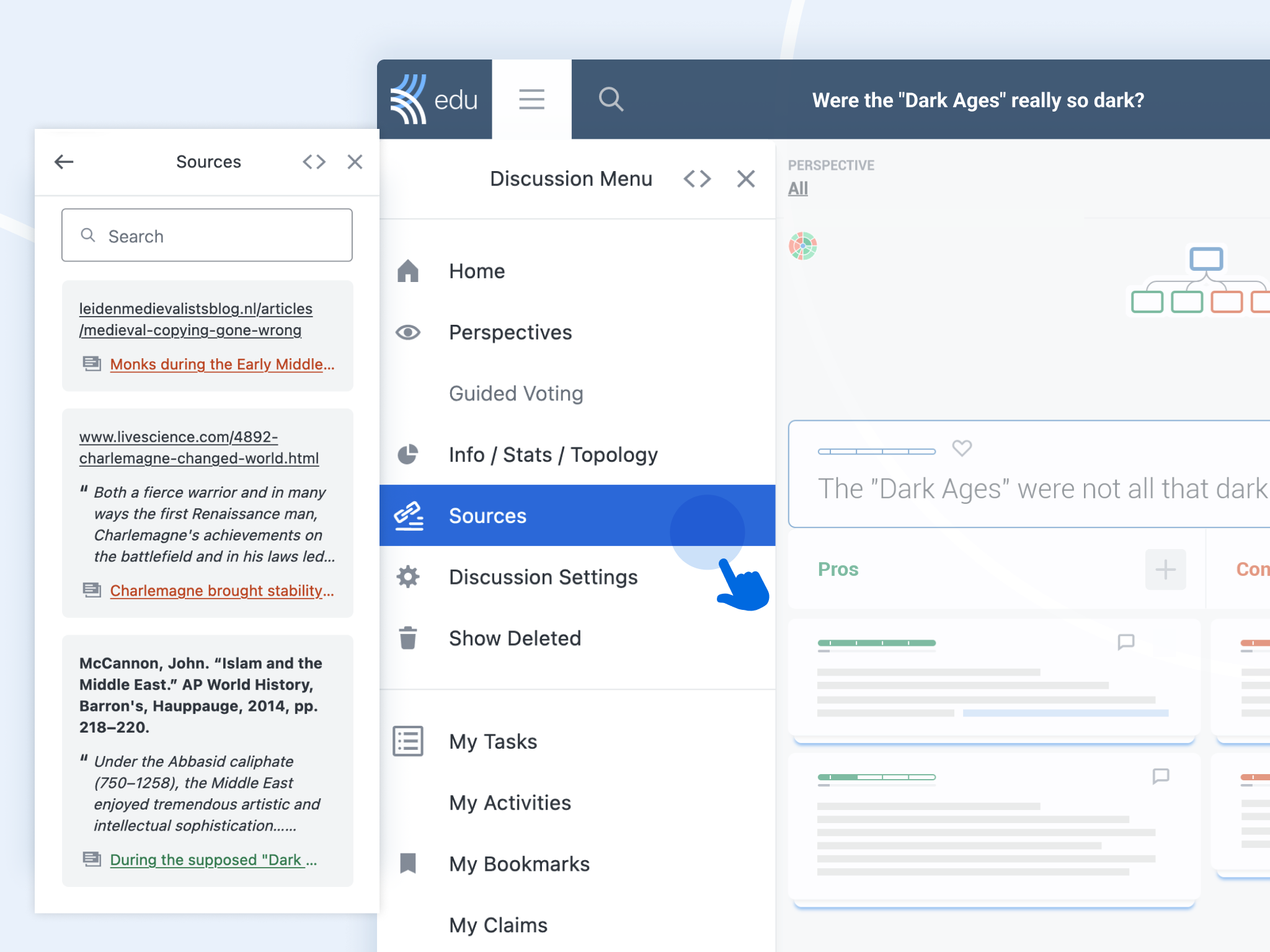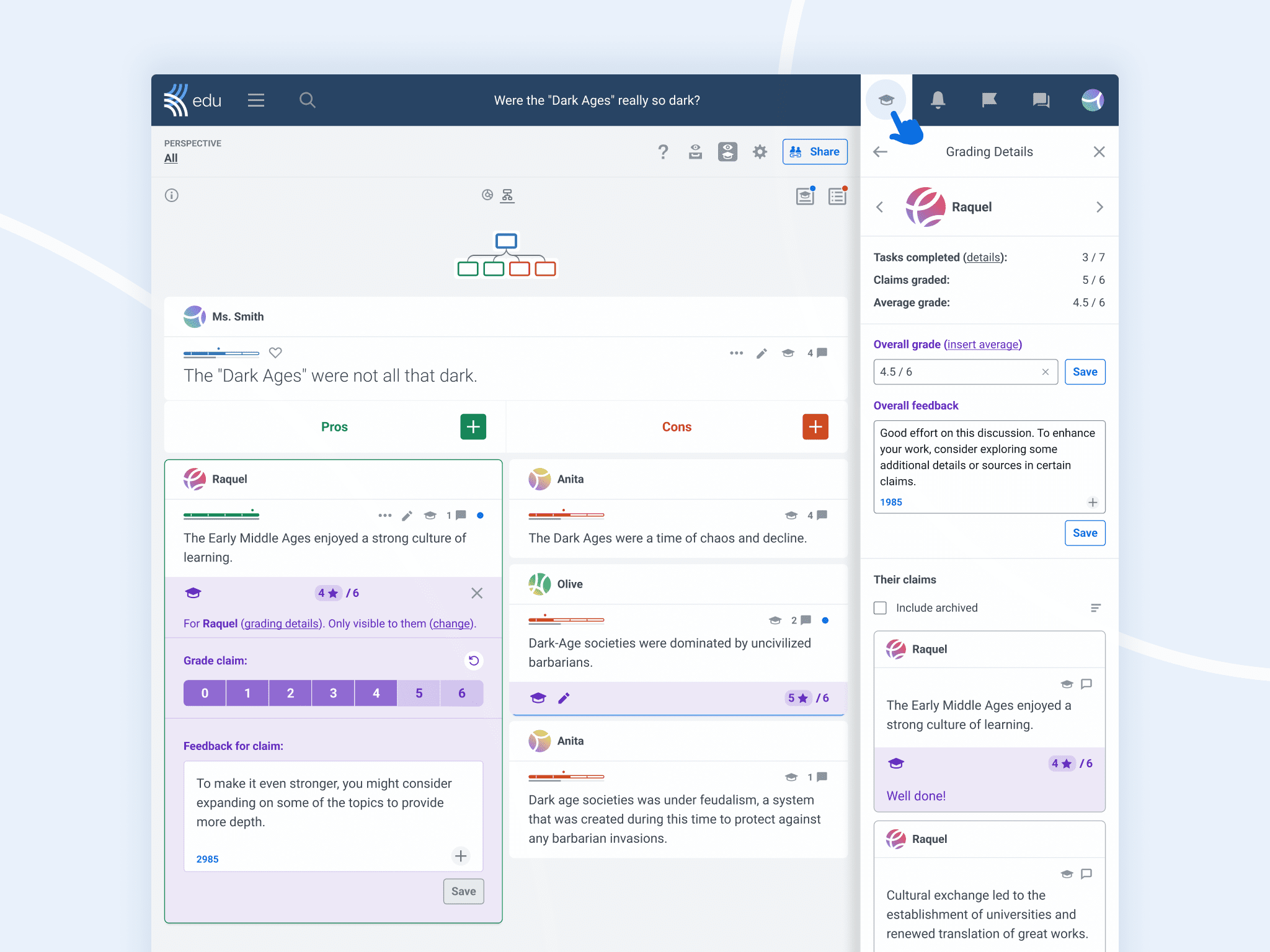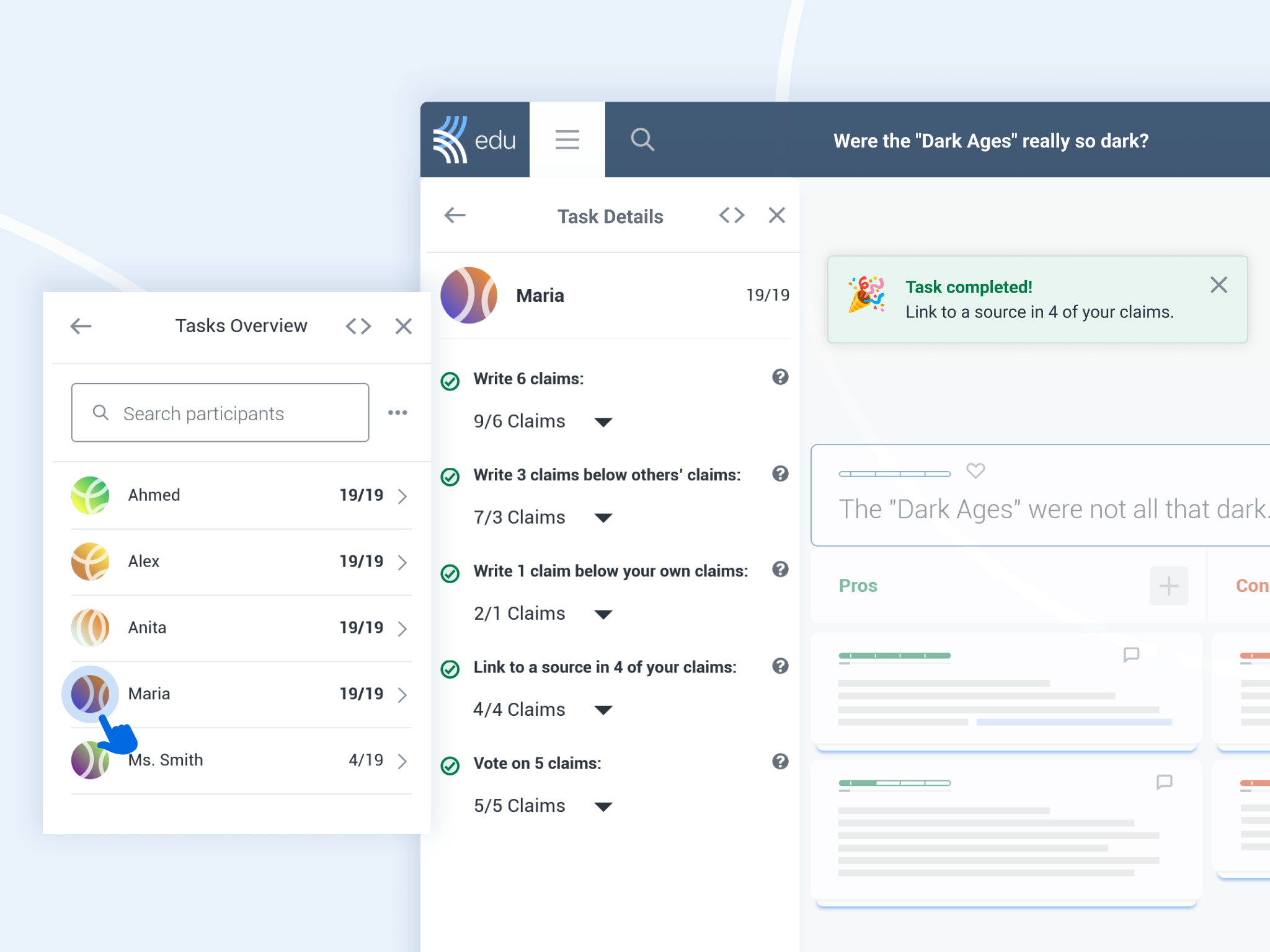Essay writing is one of the most important skills taught at schools as well as one of the most complicated for students to learn. That’s because there are so many skills involved for students to successfully develop arguments and structure longer-form essays.
Properly planning a capstone or longer-form essay project with your class can soak up hours. A well-written essay must have a clear structure, effective supporting arguments and sources, as well as engage with criticisms. This is especially true with essay projects that require students to do extensive research and planning before they even start writing.
To make this process easier for both teachers and students, find out how you can use Kialo Edu (for free!) to save you time and help your students develop all the skills necessary for planning well-researched, structured, and compelling essays!
The advantages of students using Kialo Edu to plan essays
1. Students have a better way to organize their research
For research-based essays, students unsurprisingly have to do a lot of research. As such, they need a clear way to keep track of all the sources and information that they will rely on.
Every Kialo discussion has a Sources tab that automatically saves every source and quote as a student builds it out. This way, when a student uses a source, they are able to keep track of it — page number included! At the same time, you get a quick overview of the sources they’ve used, creating a proto-bibliography for your students as they work.

2. Students can easily receive and implement more targeted feedback from teachers
To ensure that your students are making robust arguments, give them targeted feedback. In Kialo discussions, teachers can leave feedback and a grade on each individual claim, or on the discussion as a whole. All teacher feedback attaches to the bottom of claims, making sure your student sees it even when just skimming the debate.

This helps students to build the different parts of their essay in stages as they receive and implement feedback. As an example, students can first prioritize selecting a good argument. Then, they can work on developing and structuring it well and using their sources properly. Finally, students can focus more on their style once they put it all together in essay form.
By breaking down essay writing into stages, students are less likely to be overwhelmed by confronting all the elements in essay writing at once. You’ll also save yourself some grading time when reading their full essays if you help your students get their ideas in order before they put pen to paper.
3. Students have a better way of keeping essays structured
It can be challenging for students to develop and structure long-form essays, in which they have to explore and analyze several lines of argumentation. However, Kialo Edu’s visually structured argument maps provide an intuitive way for students to flesh out their arguments.
Here, students use higher-level claims as topic sentences, while using lower-level claims to provide support for more general arguments. By making their claims short and limiting them to a single point, it is easier for students to construct longer chains of reasoning that follow each other. This is especially great for training students’ critical thinking skills, where they are prompted to really engage with their own arguments.
Beyond that, students can also experiment with different structures in a visual way, moving claims to different areas of the discussion to see where they work best.
4. Students have more opportunities to consider counter-arguments
In long-form essays, students usually must consider challenges to the arguments they are making. Yet, it may seem easier said than done to provide as much support for the oppositional side.
With Kialo Edu’s pro-and-con structure, students are prompted to add counter-arguments. This makes it more intuitive for them to consider challenges to their thesis. By moving these con claims to different areas, they can also identify where they are most salient and how best to respond to them.
5. Students can better keep track of and manage their work progress
To better help students keep track of their progress, Kialo discussions have a convenient timeline that shows the development of their ideas. No more flipping through old drafts and comparing paragraphs!
Each discussion has a timeline of student contributions and edits in the Activity tab under the Notifications bar ![]() . Change the filter to just your student and voilà: a handy list of all the changes ever made in the discussion in reverse chronological order.
. Change the filter to just your student and voilà: a handy list of all the changes ever made in the discussion in reverse chronological order.
The entire discussion is also searchable. If students want to see a particular aspect they’ve already planned out, they can type in relevant keywords into the search bar at the top-left of the screen. All claims relevant to that topic will be listed, letting them quickly see how much they know (or don’t!).
How students can plan their essays on Kialo Edu: a step-by-step guide
You can set up a Kialo Edu discussion for your students to help them plan their essays, or use a template from our Topic Library. Using this space, students can practice writing claims and developing their arguments.
Students could explore whether governments are doing enough to fight climate change, whether Macbeth was a victim of fate, or whether the American Revolution was justified.
1. Create and set up a Kialo Edu discussion
Start by creating a Kialo Edu discussion and sharing it with your students. You can set the essay question as the name of the discussion, and add the essay’s thesis statement as the thesis. Check out this guide for planning essays in a Kialo discussion as a model of how you can set this up.
Optionally, you can add a set of top-level claims for your students, or you can have them come up with all the arguments!
2. Task students to add claims
From there, task students to create claims and add sources. We recommend starting by tasking students to create a small number of claims so that they can focus on making a clear argument and identifying the ways they will seek to prove it.

3. Give feedback on student claims, arguments, and structure
After students have added their initial claims, you can give them feedback, focusing on how successfully their argument responds to the essay question.
At the same time, you can set more tasks for students to populate the discussion and add greater detail to their essays. You can choose how many cycles of tasks and feedback you want — the longer the essay, the more claims that students should write.
4. Have students turn the Kialo discussion into a traditional essay
Once students have developed the discussion to your liking, they can turn it into a traditional essay. It’s now easier for students to organize their information as they will already have all the content structure and their topic sentences. As a result, they can focus on putting together and writing their essay!
Essay writing doesn’t need to be so hard for teachers and students alike. By separating and focusing on the individual skills involved in essay writing, teachers can help their students grow more confident and able.
If you’ve given us a try for long-form essays with your students, let us know at feedback@kialo-edu.com or on any of our social media platforms!
Want even more ideas on teaching debate and argumentation to students? Explore our collection of expertly-crafted resources!

